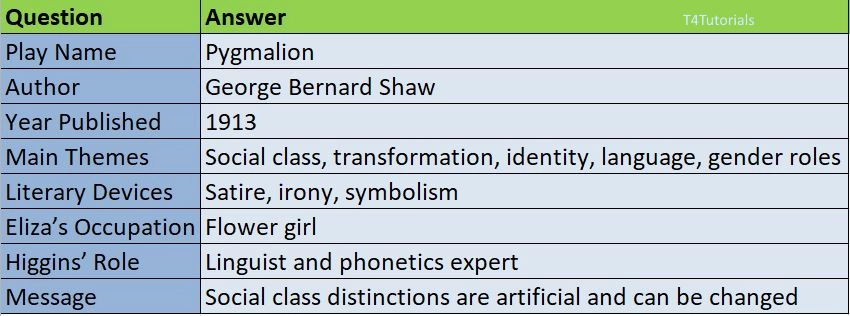Summary:
Pygmalion is a play written by George Bernard Shaw in 1913. It tells the story of Professor Henry Higgins, a linguist, who makes a bet that he can transform Eliza Doolittle, a poor flower girl with a thick Cockney accent, into a refined lady who can pass as a duchess in high society. Higgins teaches Eliza proper speech and etiquette, but in the process, she develops independence and self-respect, challenging Higgins’ views on class and gender. The play explores themes of social class, transformation, identity, and the power of language. It critiques the rigid British class system and highlights how external appearances can shape people’s perceptions. The story also examines gender roles, as Eliza asserts her independence by the end, proving that she is more than just a product of Higgins’ experiment.
10
Score: 0
Attempted: 0/10
Subscribe
| Question | Answer |
| Play Name | Pygmalion |
| Author | George Bernard Shaw |
| Year Published | 1913 |
| Main Themes | Social class, transformation, identity, language, gender roles |
| Literary Devices | Satire, irony, symbolism |
| Eliza’s Occupation | Flower girl |
| Higgins’ Role | Linguist and phonetics expert |
| Message | Social class distinctions are artificial and can be changed |